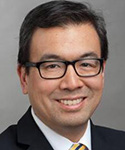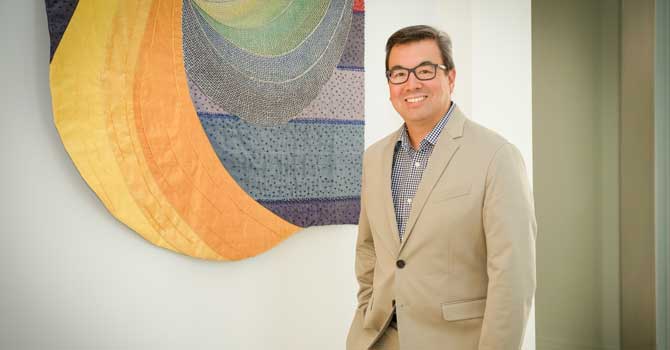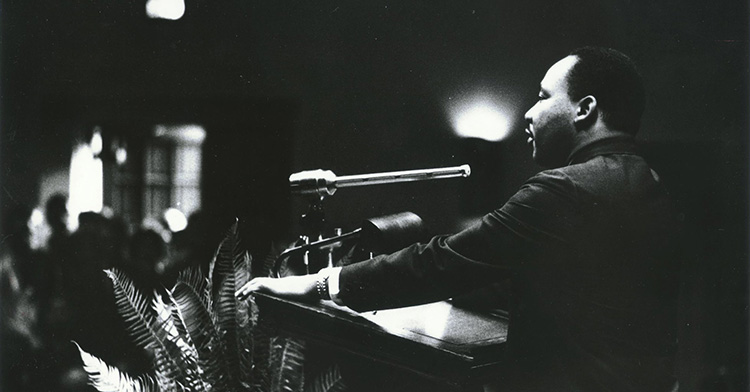When Frank Yamada became executive director of The Association of Theological Schools, he knew that a large job of passing new accrediting standards lay ahead of him. What he didn’t know was that the coronavirus pandemic would make passing those standards much more complicated -- and needed.
In March, Yamada and the ATS staff had to plan a shift for their biennial meeting from a physical site to online even as their member institutions struggled with the same transition.
“It required very agile thinking,” Yamada said.
 They had a couple months to convert the 450-person conference-style meeting to an online event. They included two open forums, one on the accrediting standards and one on the issues and concerns related to the Black Lives Matter protests that were gripping the country. Ultimately, the meeting was a great success, as the new standards were passed by a vote of 198-1.
They had a couple months to convert the 450-person conference-style meeting to an online event. They included two open forums, one on the accrediting standards and one on the issues and concerns related to the Black Lives Matter protests that were gripping the country. Ultimately, the meeting was a great success, as the new standards were passed by a vote of 198-1.
The new standards, which Yamada calls a once-in-a-generation decision, help clarify and simplify the requirements for ATS members but also help schools adapt to the unprecedented needs they face during the coronavirus pandemic.
Prior to his work at ATS, Yamada served from 2011 to 2017 as the 10th president of McCormick Theological Seminary, where he had been an associate professor of Hebrew Bible and the director of the Center for Asian American Ministries since 2008. He earned his M.Div. and Ph.D. degrees from Princeton Theological Seminary and is ordained in the Presbyterian Church (U.S.A.).
Yamada spoke with Faith & Leadership’s Chris Karnadi about ATS’ new accrediting standards and the effects of the pandemic on ATS schools. The following is an edited transcript.
Faith & Leadership: We spoke to you when you had just started your position at ATS three years ago. How has it been?
Frank Yamada: It’s been a wild ride. I think it’s been great work, really substantial work. We just adopted a set of accrediting standards, which is really a once-in-a-generation kind of decision. And we did that on top of navigating the pandemic and then the racial reckoning that has arisen in our country with the killing of George Floyd. This has been a little bit of uncharted territory for us.
We were able to have our first-ever completely online biennial meeting, which usually has about 450 people. It was planned for Vancouver, but we had to pivot both because of the pandemic and to address the racial issues which arose at the same time. I don’t think you could have created a more challenging playbook, but I was really proud of the fact that the staff came together and was able to pull off a successful outcome.
That the accrediting standards passed by a 198-1 vote was just a huge accomplishment. It says much more about the two years previous to the process of listening to the membership. But again, that’s another way to punctuate the end of these three years.
F&L: Speaking of those new degree standards, did the pandemic actually impact their final consideration and adoption?
FY: I don’t think that the standards were changed based on the pandemic, but I think that these new standards will help schools identify how to do quality education during this time, because they think really hard about the contextual nature of a school’s mission and the specific way that a school tries to implement that vision and that mission.
The three themes from our biennial meeting were quality, clarity and flexibility. We wanted the clarity of simplicity; the fact that these standards used to be about 100 pages and are now down to 18 is huge.
That was done by going more principle-based in our standards -- we were able to actually provide some greater simplicity and clarity about the standards. These standards provide flexibility for schools to be able to implement them in ways that are appropriate to the schools’ mission to respond to the current context, and that’s where I think these standards actually help schools, especially during this time.
For example, we changed residency requirements. With these new standards, there are only residency requirements for the Ph.D. program, and all the other degree programs no longer have residency requirements. So what that means is that it provides schools the flexibility to be able to do, for example, more online distance education at this time. Now, it also means that schools can’t just do distance learning willy-nilly.
F&L: From your observation, how did schools adjust last spring to the need for online education during the pandemic?
FY: I think it’s fair to say that many of the schools were well positioned to deliver their courses online, because many of them had been approved for a comprehensive distance education. But even for those schools that weren’t equipped to do that, the commission voted to provide some flexibility for the duration of the pandemic.
In those cases, it wasn’t comprehensive distance education; it was more emergency remote delivery. And what the new standards will take into account is whatever the mode of education, you have to demonstrate how it is achieving quality.
So we’re not throwing quality out the window for the sake of flexibility. We’re saying you can deliver your degrees and your educational mission online if that’s what you see is best, but whether it’s online or residential or hybrid or intensive, you’re going to have to demonstrate how you’re achieving quality while doing that.
F&L: How has the pandemic impacted ATS and ATS schools?
FY: One of the frameworks that I’ve been using is thinking about the effects of a pandemic in the immediate, in the intermediate and in the long term. I think that framework is how we see schools have been changing too. In some ways, our work has mirrored what has been going on in schools.
The first stage was just responding to the crisis. While schools were trying to make decisions about virtual commencements -- these immediate- and emergency-delivery models -- we the staff were focused on our spring programming. We have a lot of programming that is geared to administrative leaders in ATS schools. We do leadership education and professional development for administrators, and we have initiatives that we’re running for the endowment on a number of different areas.
Basically, one of the first things we did in the immediate is we just had to either postpone or convert those meetings to online modes. One of our first immediate concerns -- and really, the big test case for that -- was the biennial meeting. Like most organizations, we often forget now that we’re almost six or seven months into the pandemic. There was a time frame in that period of March and April where it seemed like things were changing daily.
In the intermediate, there were some sustainability questions raised about continuing the quality of care for their students. A number of things came up. As one would expect, concerns about finances came up. But the No. 1 challenge that the executives, presidents and academic officers named was enrolling new students beyond the spring.
Three-quarters of both executives and academic officers named that concern. Another way to look at that is their biggest concern was about the sustainability of their mission, not necessarily the sustainability of their finances for that mission.
About two-thirds of executives were concerned about the ability to keep donors engaged in supporting the school, and that was a challenge that we saw, for example, with the financial disruption of 2008. We reasonably saw some presidents that were concerned about the ability of donors to continue to support the school in the intermediate term and in the long term for the school.
For academic officers, maybe about half of them, the main concerns were keeping current students enrolled beyond spring. About 42% of CEOs were looking at the possible need to maybe cut staff, but only a quarter of both CEOs and academic officers were looking at the need to cut faculty. Now, that would actually resonate with trends that we saw in 2008, and schools actually generally did keep faculty in the response to 2008. They did not do a lot of faculty cuts in response to 2008, but what did change is there were some staff cuts, and often faculty then ended up taking a lot more administrative responsibility because of that.
For the future concerns, there were double-digit percentages of both academic officers and executives in our survey who were concerned about the potential that their schools would have to declare financial exigency as a result of the financial implications of the pandemic. If you’re talking about 10% of ATS schools, you’re talking about 27, 28 schools where they think there’s the potential to declare exigency. That’s a pretty large number of schools.
F&L: With the number of schools that anticipate struggling, should we be concerned about some of them closing?
FY: Well, one thing that my predecessor Daniel Aleshire used to say often is that theological schools are amazingly resilient. We did not see a huge amount of closures in the wake of 2008. I don’t know if we’re going to see a huge amount of closures yet. The long-term financial impact of this pandemic on our national economy, on our local economy is still a great unknown, and that’s going to be a big driving issue around how schools are going to respond.
Currently in the ATS, about 45% of schools are evangelical Protestant. About 32% are mainline Protestant, and about 22% are Roman Catholic or Orthodox. I would say that in terms of enrollments, the challenges don’t look the same. Enrollments for evangelical Protestant schools have remained pretty flat for probably the last decade or so.
The ATS used to be very much a mainline Protestant organization. Now the plurality of schools are actually evangelical Protestant. Even saying that 45% of the schools are evangelical Protestant doesn’t quite paint the picture. It’s not just representation by school. In terms of enrollments, evangelical Protestant schools are currently serving 65% of all ATS students. Another illustration of that is that the top 20 ATS enrollment schools in 2019 were all evangelical Protestant.
Evangelical Protestant schools tend to be the larger schools in terms of enrollments. They do carry the lion’s share of enrollment across the ATS, and I would think the majority of them are relatively young institutions as a whole. They don’t have large endowments, and so they tend to be tuition driven. So you can imagine that for them, challenges in enrollment and downturns in enrollment would significantly impact them financially, whereas for a mainline Protestant school with a large endowment, what we tend to see is that they will absorb those losses in terms of tuition revenue through their endowments.
For an evangelical Protestant school, enrollment challenges are the big issue. If there’s a 10% drop in enrollment, that’s a significant drop in revenue. So you begin to see how these challenges are very diverse, and they’re diverse in the ways that schools are diverse.
For mainline Protestant schools, enrollments have been dropping historically, and because of that, we’re seeing a number of schools that are looking into mergers and merger propositions. And again, a disproportionate number of those schools that are looking into mergers have been mainline Protestant schools. You could say as well that there’s still the big unknown about how the financial challenges will affect ATS schools in relationship to COVID-19.
So all that to say that I do think there are financial concerns. I don’t think that we’re forecasting that there’s going to be a huge number of schools closing, though any kind of financial stress on schools that are already financially stressed is not a good thing. So that may be a less direct way to answer your question. You’re not going to get an answer from me saying, “By such and such a year, this percentage of schools will close.” I just don’t think we see that yet in the data.





















